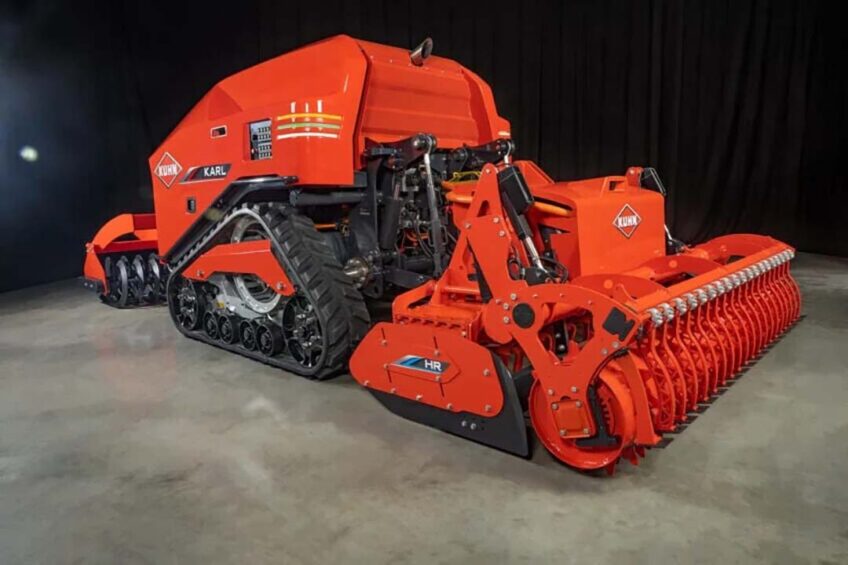How are field and harvest robots powered?

For tractors it is still obvious that they have a diesel tank. How about field and harvest robots? How are they powered? An overview and analysis.
The Future Farming field and harvest robot catalogue is an invaluable resource for all sorts of statistics and analysis on robot adoption, pricing as well as the power source they run on. The latter is highly related to the type of work the robot has to carry out. Field robots more or less substituting tractors and capable of performing soil preparation and cultivation, are mostly powered by a diesel combustion engine. Examples include the AgroIntelli Robotti, AgXeed AgBot, Horsch RO G 500, Krone/Lemken VTE and the Kuhn Karl. Not all these are already commercially available and some combine a diesel engine with an electric driveline concept.
Text continues below picture

Exceptions
Of course there are exceptions that prove the rule. Such as the battery powered and fully electric Amos Power A3/A4 and the EarthAutomations Dood that is available both with a diesel combustion engine and a battery pack. The prototypes Drever 120 and John Deere Sesam 2 are also battery powered. The Drever with its battery swap system already familiar in construction machinery such as (large) excavators, might be the closest to market introduction.
And at the recent the World Ag Expo in Tulare, California, autonomous sprayer manufacturer GUSS debuted a battery powered version of its Herbicide GUSS.
Text continues below picture

50 – 50
If we dive into the most recent field and harvest robot buyers’ guide, we can conclude that from the models included for more than one year, 24 robots are diesel powered. That is, either as the main power provider or as a generator powering an electric driveline. The current catalogue also contains 24 battery powered robots that were also included in the previous edition. Battery powered in this case means both fully battery powered and batteries supported by one or more photovoltaic/solar panels.
When taking a look at the newcomers in the catalogue, three robots are diesel combustion engine powered and nine are battery powered. Probably not significant enough to indicate a trend, but the majority of newcomers chooses to opt for a fossil free power source. For battery powered vehicles with solar panels, five robots were already in the catalogue and there are three new additions. All in all, 45 per cent of the included robots is diesel powered and 55 per cent is battery powered.
Text continues below picture

Likely electric in future
Some manufacturers have indicated or shown that they can upgrade or change their driveline concept to a fossil free alternative. Whether that is a battery powered version such as Herbicide GUSS or a hydrogen powered version such as Exxact Robotics Traxx. Equally interesting is the electric powered OXE-E that relies on an extension cord to obtain electricity for its propulsion. An exercise John Deere also did some five years ago.
Join 17,000+ subscribers
Subscribe to our newsletter to stay updated about all the need-to-know content in the agricultural sector, two times a week.
 Beheer
Beheer



 WP Admin
WP Admin  Bewerk bericht
Bewerk bericht